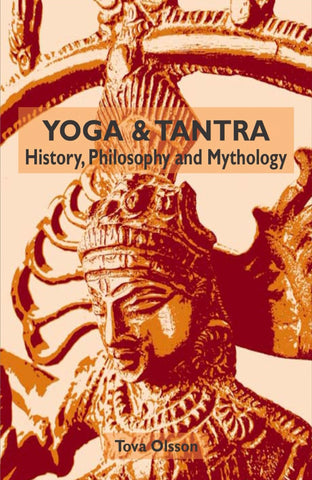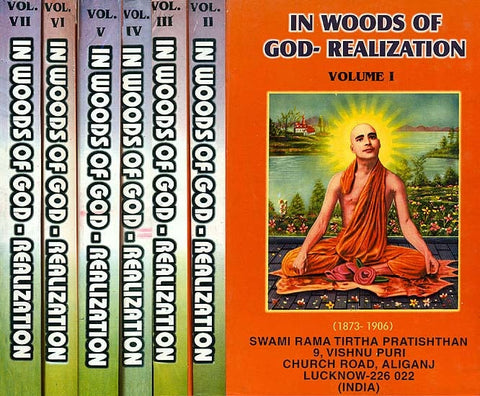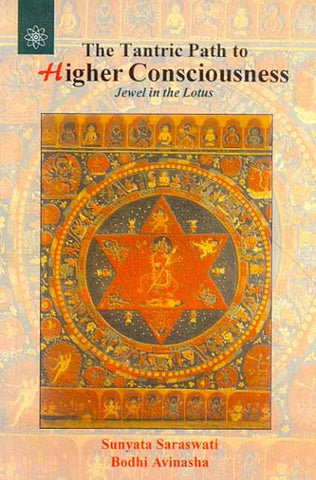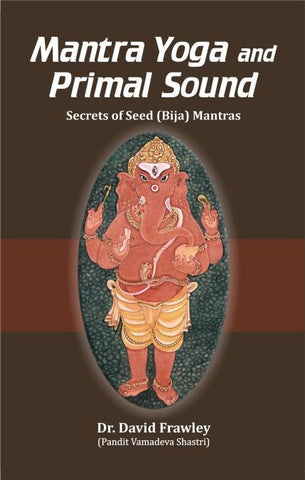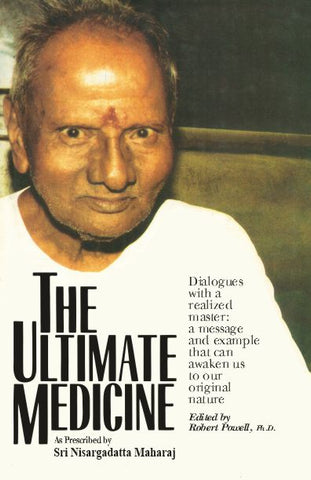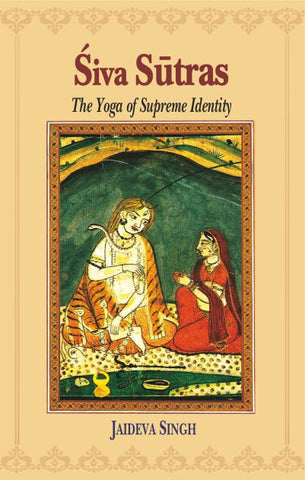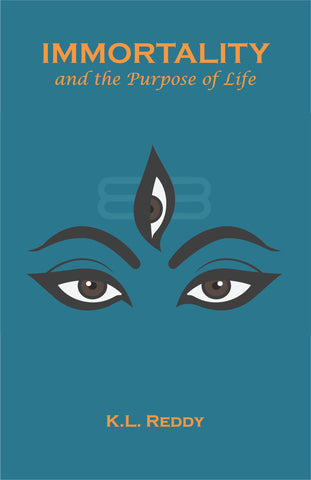Your cart is empty now.
The book “Foundations of Contemporary Yoga and Yoga Therapy” written by the well known author Professor R.H. Singh, is a comprehensive write-up on the present status of Contemporary Yoga. The book precisely outlines the evolution of the Science of Yoga from antiquity to the modern world. The Foundation of Yoga are laid in three principal ancient texts of pre-Buddhist age namely the Early Upanisads, the Bhagwadgita and the Yoga Sutras of Patanjali.
The Science and Art of Yoga as conceived in foundation texts appear to have been influenced to a notable extent down the ages by the teachings of Jainism, Buddhism and certain other religious philosophies, followed by the serious attempts of Shri Shankara to reiterate the Upanishadic thoughts through the teachings of Vedanta.
In contemporary times the discipline of Yoga adopted a global shape with scientific temper and trends of social applications. The Contemporary Indian thinkers like Swami Vivekananda, Shri Aurobindo, and Mahatma Gandhi developed Yoga as a social movement for the benefit of society at large.
The health promoting and therapeutical applications of Yoga practices are the most pertinent side benefits of this fast reviving ancient science which could of larger interest. And hence the present volume adds special chapters on Yoga Physiology & Yoga Therapy. The author of this book who is a teacher, physician and an activist in this field has succeeded in presenting an authentic write-up on Yoga in its totality. The book describes the ancient concepts and contemporary trends adequately illustrated with references from ancient scriptures and with scientific data on recent studies.
Born on January 10, 1942 Prof. Ram Harsh Singh graduated in Ayurveda, Medicine and Surgery from prestigious Banaras Hindu University in 1961 with throughout top rank career. He did his Ph.D. and D. Litt under the supervision of Padmashri Prof. K.N. Udupa and was awarded Doctorate of Medicine Honotis Causa by Medicina Alternativa, Alma Ata in 1983. He was elected Fellow of National Academy of Indian Medicine, Jewel Member of All India Ayurveda Academy and was appointed National Professor by the Department of AYUSH, Govt. of India in recognition of his outstanding contributions in the field of Ayurvedic Medicine besides many other awards and prizes including Hari Om Ashram Award, IASTAM Award, Capt. Srinivas Murthy Medal and Vd. R.N. Sharma National Ayurvedic Research Award. He has been the member of National Commission on History of Science and Chairman on History of Science and Chairman Scientific Advisory Committee of CCRAS.
Prof. Singh joined the Faculty of Ayurveda at Banaras Hindu University in 1964 and served this institution for four decades as Professor-Head Kayacikitsa & Dean, Faculty of Ayurveda at B.H.U. Subsequently (2003-2006) he served as the Vice Chancellor of Rajasthan Ayurveda University. Presently he is Professor Emeritus and Senior Ayurvedic Physician at University Hospital, BHU. Prof. Singh has published over a dozen important books on Ayurveda and over 200 research papers. He has contributed chapters to the prestigious volumes on History of Medicine in India & History of Technology in India published by INSA. He has produced 100 MDs and 30 Ph. Ds under his guidance.
Back of the Book
The Holistic Principles of Ayurvedic Medicine
Prof. Ram Harsh Singh
The book Holistic Principles of Ayurvedic Medicine written by the well known author Professor Ram Harsh Singh is a complete and comprehensive treatise on the subject. This is the first book ion English which deals with the subject in al completeness and clarity covering all aspects of the fundamental principles of Ayurveda, its unique approaches and the details of clinical medicine, diagnostics and therapeutics of Ayurveda.
Separate chapters have been added on aetiopathology in Ayurveda, methods of Ayurvedic diagnosis and treatment including Pancakarma Therapy, Rasayana and Rejuvenation, Geriatrics, Ayurvedic Psychiatry, Ayurvedic Materia Medica, Biomedicine and Bio-energetics. Most valuable information is presented in the chapter on Ayurvedic treatment of chronic intractable diseases. In the end, the book is appended with a write-up on Recent Advances in Ayurvedic Medicine extracted from the synopsis of First National Conference on Kayacikitsa organized by the author, besides a comprehensive bibliography, a descriptive glossary of Ayurvedic technical terms and an exhaustive word index.
The author of the book being a senior Professor of Ayurvedic Medicine in the University system and being a reputed physician and researcher, this book has been richly benefited by his scholarship and professional experience, this book is a rare blend of conceptual authenticity, linguistic clarity and scientific temper.
In this book on Yoga, Professor Ram Harsh Singh is to be congratulated on a timely publication. It is increasingly recognized that Yoga, in its eight fold structure, has a vital role to play in fulfilling the needs of human life today. Never before has the need for Yoga been so great. Never before have so many people enjoyed wealth on such a scale. Our modern, post-industrial civilization is promising to eliminate poverty and bring universal affluence. Every decade brings technological innovations on an unimaginable scale. The promise of nanotechnology and nanobiotechnology is to dwarf the revolution brought in the last twenty years by personal computers, the internet, mobile telephony and digital photography.
Yet men and women in advanced electronic societies do not look happy. In the west, when asked, people do not even expect to be happy. Recently I travelled on a public bus from Coimbatore on my way to consult at ISHA Yoga foundation. The villagers were chatting and laughing, light in their eyes. A group of three ladies were in ecstasy over a young baby, their enjoyment obvious for all to see. Would that public transport in developed western societies was filled with such happy faces. Instead, the cares of modern living, the stress of life, are writ large for all to see.
S What has happened to our brave new world of affluence and plenty for all, that it has ‘lost the plot’ so completely? Which media do not unceasingly report violence? What film is thought complete without scenes that degrade human dignity and sensitivity? The Founding Fathers of the United States of America recognised that the urge to happiness is the chief motivator of human life, as it is indeed of human consciousness itself. Yet the American dream has become an increasing nightmare, that will challenge the new President's fullest measures of both audacity and hope, if he is to rectify the present traumas, and restore to his people the sweet-dreams of their nation’s infancy.
In restoring humanity from this chamber of horrors, Yoga has a key role to play. America has long recognized its potential. Even before Swami Vivekananda’s visit to the Parliament of Religions in Chicago in 1893, the nation had espoused Yoga philosophy. Harvard was famed for its Professor of Philosophy, RalphWaldo Emerson, teaching the Upanishads, and Transcendentalism. His student Henry David Thoreau lived as a recluse in the woods, making Walden Pond the place of pilgrimage that it is still today. Who else was mandatory reading for every American, apart from the Founding Fathers themselves? And Boston’s 20th century heirs have carried his message into different fields in similar revolutionary tones.
One of Massachussets’ most famous psychologists was Brandeis University's Abraham Maslow, a man well versed in eastern thought. Maslow's hierarchy of needs lays out the solution to humanity's present crisis in the most general terms. Other North American thinkers who have also made key contributions are Hans Selye in his Stress of Life, Alvin Toffler in Future Shock, and John Naisbitt in Megatrends. All are so well known that they need but little introduction. Their image of 20th century life has one significant conclusion: unless humanity establishes itself in a world that is more than the materialist economics of employment, commerce and trade, our future is bleak.
What, you may ask, does all this have to do with the eight limbs of Yoga? The answer, as we shall see, is that the practice and understanding of Yoga provides the simplest and most straight-forward solution to the problems these thinkers have identified. Let us consider this in more detail.
Over the past fifty to sixty years, the world has enjoyed an unprecedented pace of economic growth. Thanks to the realisation of John Forbes Nash, of ‘A Beautiful Mind’, that such growth involves win-win situations in which all participants benefit, the OECD nations were able to develop policies of economic cooperation, expand their economies at unprecedented pace, and defeat totalitarianism. Countries like Singapore, Malaysia and China followed. The latest success story is India.
India has been the unique land of in-depth human wisdom and insight since antiquity. The Vedas originating from India teach the real meaning of life on this earth and beyond, with splendid speculations on the purpose of life, its origin and end. The universe as we see is the creation of the power of cosmic consciousness, the Brahman. The Brahman is present in all elements of the creation, and thus it exists as a kind of united field of consciousness. The consciousness of each individual being is a continuum with the cosmic consciousness which may reflect a spectrum encompassing the most gross upto the most subtle. Because of prevailing worldly ignorance ordinarily we do not perceive the above mentioned continuum of the spectrum consciousness. Yoga is the science and art of such a Sadhana which resolves the prevailing ignorance and helps in promoting our awareness, self realisation and super consciousness.
The subtle goal of Yoga as mentioned above is its core goal, bur the comprehensive technology prescribed by the scriptures to persue the path of Yoga comprise of many such practices which if practiced with yukti may yeild many intermediary benefits which may be applied in promotion of health, prevention of diseases and also in treatment of certain disease states. Ordinarily there is no contradiction between these two aspects of the practices. The Contemporary Yoga essentially attempts to work for both these objectives. As a matter of fact these two dimensions of Yoga are likely to be complementary to each other. The present book aims to review the main features of Contemporary Yoga with equal emphasis on both the aspects focussing particularly Yoga therapy.
However, it is imperative to emphasise that the spiritual dimensions of Yoga and its application in expansion of consciousness and self realisation is primary and essential goal of Yoga; the health and medical applications of Yoga are only the side-benefits. These side-benefits can not be considered the primary goal.
A Yoga practitioner should begin with study of the scriptures on ideology and technology of the practice of Yoga and should practice the same with Abhyasa and Vairagya. Such a practice will bring about changes in his mind-body system from physical to mental, mental to social and social to spiritual proving Swasthya and Moksa a continuum.
The present revised edition (2nd edition) of the book is being presented to the prospective readers with added information on the central theme of this work. The author intends to emphasise two major aspects, firstly Yoga as the science of self awareness and super consciousness, and secondly Yoga for its side benefits in health care and therapy. The present edition has been strengthened with few newer chapters on Yoga Physiology and Yoga Therapy to make it useful for all those readers who may like to utilise Yoga as a health science both from promotive-preventive and curative points of view. It can not be over emphasied that the most prominent dimension of contemporary yoga in present times is Yoga for Health and Therapy.
The book is comprised of 10 Chapters namely - 1. General Introduction, 2. The Ancient of Classical Concepts of Yoga, 3. Yoga Down the Ages, 4. The Contemporary Yoga, 5. Biophilosophy of Yoga, 6. The Yoga Psychology, 7. The Yoga Physiology, 8. Physio-therapeupics of Yoga, 9. Psycho-therapeutics of Yoga, & 10. Recent Advances in Yoga for Health and Therapy.
It is hoped that this new revised edition of the book will receive the attention of readers from different fields both basic and applied.
The author acknowledges the leads received from several publications in the allied field particulars the works of Dr. David Frawley, David Coulter and his own published work. The author is specially thankful to the noted philosopher scientist Dr. Alex Hankey for writing a lucid foreword.
Yoga is one of the most popular topics of the day. All sections of the society have shown interest in the study and practice of Yoga in recent years. The scope of Yoga has become very wide-spread because of the fact that people from different walks of life appear to have been taking interest in Yoga from different angles. During last few decades Yoga has become not only popular but has also grown in newer dimensions. In recent years Yoga has migrated substantially from a limited Indian art to an International Science of global significance, from a pure spiritual persuit to a growing scientific discipline and from a path of individual sadhana to a movement of social transformation. Thus Yoga as known today is considerably different than its contents as conceived in ancient scriptures. As a matter of fact the aforesaid developments in the understanding of the practice of Yoga in modern times has been stretched so much towards its physical and social goals that it has started losing its original spiritual hights and values .. Many so called Yoga teachers and practitioners of Yoga without giving due consideration to the original ancient concepts of Yoga appear continuously attempting to highlight the Hathayogic practices to develop it in the form of a physical science in order to exploit it as a method of achieving mental and physical fitness. Many investigators are interested in developing certain Hathayogic practices to use them as a Therapy for the treatment of a variety of diseases including physical rehabilitation.
It is imperative to emphasise here that whatever we hear and see about Yoga today is only a minor aspect of Yoga. The main stream of Yoga is spiritual. Yoga is essentially the science of realisation of the ultimate truth. It primarily teaches renunciation of physical values and aims at the union of the individual consciousness with the cosmic or divine consciousness. There is a need of reviving, with greater emphasis, these original higher ideals. There is no harm if Yoga is also utilized for its intermediary goals like its use for promotion of health, prevention and cure of diseases, but it is all the more important to prevent the growing emphasis on its exploitation as a physical science alone. Yoga cannot be allowed to develop into a form of physical education. In order to provide proper perspectives to the revival and development of Yoga it appears essential to unfold and popularise the original ancient concepts of Yoga in the light of its main foundation texts namely the Early Upanisads, Bhagawadgita and the Yogasutras of Patanjali.
The present book is being presented to the prospective readers and votaries of Yoga in order to support and subscribe the theme indicated above. This book describes in brief the ancient concepts of Yoga along with an overview on the contemporary movement and the current trends in this field including the rational medical applications of Yoga practices. It also presents a review on the present status of medical research on Yoga. It is hoped that this book will spread the ancient and modern knowledge on Yoga in proper perspectives.
A closer examination of the trends of evolution of the science of Yoga from antiquity to the modern world indicates that the Yoga movement has passed through the following three historical phases:
1) The Foundations of Yoga - which consist of the fundamental knowledge of Yoga as founded in three principal scriptures viz., (1) The Early Upanisads (600 B.C.), (2) Bhagawadgita (500 B.C.), (3) Patanjala Yogasutra (300 B.C.).
2) Yoga Down the Ages - the philosophy and practice of Yoga during the years 200 B.C. to 1800 A.D. appear to have been largely the part and parcel of several religious thoughts such as Hinduism, Jainism, Buddhism, Suphism, Sikkhism etc.
3) The Contemporary Yoga is based on teachings and contributions of some contemporary Indian Philosophers like Swami Vivekanand, Shri Aurobindo, Mahatma Gandhi, Vinoba Bhave, Shri Krishna Murthy and others who did commendable job in bring up Yoga from its individualistic approach to a mass application for social development and reform emphasising the need of scientific understanding of this great spiritual discipline. Such an effort led to a rapid spread of Yoga to the western world and an increasing interest of a number of investigators in the scientific evaluation of Yogic practices for their utility as health promoting practices. The contributions of Swami Vivekanand (1863-1902) and lately of Swami Kuvalayanand (1924) are of historic significance.
4) Yoga for Health and Therapy - The central stream of revival and development of Yoga appears to be in the direction of its application as a health science and as therapy for certain diseases.
As mentioned above the main feature of contemporary Yoga is the growing application of Yoga to the welfare of a common man in the society. An assessment of the interest of the people and the possible expectations from Yoga reveals interesting facts. It appears that the interest of the people in Yoga widely varies. People are attracted to Yoga with one or the other of the following aspirations :
1. Yoga for promotion of positive health i.e., Swasthya.
2. Yoga as Therapy for treatment of a number of diseases i.e., Cikitsa.
3. Yoga for developing paranormal powers i.e., Siddhis.
4. Yoga for expansion of consciousness i.e., Prajna.
5. Yoga for self realisation and super consciousness and liberation or Moksa.
As also emphasised elsewhere Yoga has grown extensively popular in recent years. The votaries of Yoga have taken interest in this field in such a large number and with such a varied approach that it has given rise to many controversies and confusions. Yoga is an important component of Indian philosophy, culture and social traditions. But due to the rapid emergence of worldwide interest from varied angles it has become difficult to identify and to provide an appropriate definition to Yoga as known today. It also appears difficult to visualise precisely the perspectives and future scope of Yoga. It may not be out of place to emphasise that before planning the modus apparandi of revival and development of an ancient knowledge in modern times, it is essential to understand and to identify the original theme of the said knowledge and the objectives with which the same was conceived by its propound-ers. If attempts are made to revive and develop such ancient sciences without proper understanding of their original contents, the said developments may not be based on sound footings and may have to face many odd situations.
A glance on the present state of affairs in the field of Yoga indicates that Yoga is being developed largely as a system of physical culture and health practice. A large number of Yoga teachers and leaders of Yoga ideology are seen propagating Yoga in different forms throughout the world giving it more or less a commercial form. Yoga appears to be more popular among the younger generation of the present time. As revealed by a trend survey in United States of America experts have reported that in recent years there has been a trend of decline in the interest in Yoga. However, it appears necessary to develop Yoga on institutional basis in the light of its basic concepts aiming more towards developing it as a discipline of total uplift of man and the society. Its values dealing with mental transformation and social reform should be given more importance than the physical aspects.
However the intermediary goals and side benefits of Yoga in promotion of health and treatment of certain chronic life-style related diseases and psychosomatic ailments, should be harvested on rational basis.
| 1 | General Introduction | 1-4 |
| [The Foundation of Yoga 2, Yoga Dawn the Ages 3, The Contemporary Yoga 3, Yoga for Health & Therapy 4] | ||
| 2 | Ancient Concepts of Yoga | 5-56 |
| [What is Yoga 5, Classification of Yoga 10, The Foundations of Yoga 12, The Yoga Darsana (The Philosophy) 17, Yoga Sadhana (The Practice) 23, Janma-Ausadha-Mantra-Tapa etc. 27, The Astanga Yoga 29, Yama 30, Niyama 32, Asana 32, Pranayama 39, Pratyahara 41, Dharana (Concentration). 43, Dhyana (Meditation) 45, Samadhi 46, Classifications of Samadhi 50, Mudra, Mahamudra, Bandha & Satkriya 52, Kudalini Yoga 53] | ||
| 3 | Yoga Down the Ages | 57-83 |
| [The Vedas57, The Brahmanas 58, The Aranyakas 58, The Upanisads 59, The Vedanta & Sankara 60, The Adhyatma Yoga 62, The Seven Stages of Adhyatma Yoga 63, The Tantra Traditions & Tantric Yoga 65, Buddhism & the Buddhist Yoga 71, The Central Theme 72, The Schools of Buddhism 75, The Upanisads & Buddhism 76, The Doctrine 77, Yoga of Jainism 79, Buddhism versus Jainism 80, Yoga in Sufism 82, The Age of Dominence of Hath Yoga 83] | ||
| 4 | The Contemporary of Yoga | 84-93 |
| [Features of Contemporary Indian Philosophy 84, Swami Vivekananda 86, Anasakti Yoga of Mahatma Gandhi 89, Shri Ayurobindo & his Integral Yoga 91, Ascent or Evolution 93] | ||
| 5 | Bio-Philosophy of Yoga | 94-102 |
| [Introduction 94, Self Realisation 95, The Theory of Karma & Continuity of Life 95, The Karmic basis of Medical Sciences 96, The Unorthodox Views 97, The Distinctions 98, Jainism versus Buddhism 99, The Paradigm Shift 100, Conclusion 101] | ||
| 6 | The Yoga Psychology | 103-114 |
| [Introduction 103, Psychology of Yama & Niyama 105, Psychology of Asana & Pranayama 107, Prtyahara – Dhyana-Samadhi 111, Conclusion 113] | ||
| 7 | The Yoga Physiology: | |
| 7.1 | Physiology of Asana | 115-130 |
| [Neuro-musculo-skeletal Changes 116, Involvement of Breathing 119, Circulation and Haemodynamics 121, Specific Considerations 122, i) The Physiology of Meditative Postures 123, ii) The Physiology of Relaxative Postures 125, iii) The Physiology of Cultural Asanas 126, Some Major Therapeutic Asanas 127, Conclusion 129] | ||
| 7.2 | Physiology of Pranayama & Satkriya | 131-139 |
| [Introduction 131, Functional Anatomy of Respiratory System 132, Respiratory Control of Centres 134, The Pranayama and Breathing 134, Practical Precautions for Pranayama 135. Physiology of Satkriya 136, Conclusion 139] | ||
| 7.3 | Physiology of Meditative Practices & The State of Superconsciousness | 140-145 |
| [Introduction 140, Defining Consciousness and its Finite & Infinite Dimensions 141, Self-Purification 142, Within & Beyond and Brain 144, Conclusion 145] | ||
| 7.4 | Stress Physiology & Its Management | 146-153 |
| [Introduction 146, Aetiology of Stress 147, Pathways of Anxiety & Stress 148, Pathways of Stress 150, Conclusion 153] | ||
| 8 | Yoga Therapy – Physiotherapeutics | |
| 8.1 | Introduction to Yoga Therapy | 154-161 |
| [The Therapeutic Strategies 155, General Principles of Yoga Therapy 157, The Scope of Yoga Therapy 158, Mechanisms of Therapeutic Effect of Yoga 158, Conclusion 160] | ||
| 8.2 | Therapeutic Application of Asanas | 162-169 |
| [Introduction 162, Basics of Physiotherapeutics of Asanas 164, Some Physiotherapeutic Observations 165, Conclusion 168] | ||
| 8.3 | Therapeutic Applications of Pranayama & Satkriya | 170-178 |
| [Introduction 170, Physiotherapeutics of Pranayama 172, Physiotherapeutics of Satkriya 175, Conclusion 177] | ||
| 8.4 | Relaxation & Meditation | 179-187 |
| [Introduction 179, Scope of Applications 180, Practice of Relaxation 181, Practice of Meditation 185, Conclusion 187] | ||
| 9 | Yoga Therapy – Psychotherapeutics: | |
| 9.1 | General Considerations | 188-194 |
| [Introduction 188, The Approach & Perspectives 189, The Human Instincts & Hierarchy of Needs 190, Hierarchy of Human Needs 191, Good Mental Health versus Illhealth 192, The Mental Illhealth 192, Conclusion 194] | ||
| 9.2 | Yogic Counselling | 195-201 |
| [Introduction 195, Yogic Counselling & Behavior Modification 196, counseling of Yama & Niyama 197, Counselling on Swasthavrtta & Sadvrtta 199, Sattvavajaya or Ayurvedic Psychotherapy 200, Conclusion 201] | ||
| 9.3 | Devine Therapy | 202-201 |
| [Introduction 202, The Nature of Divinity 203, Devotion 203, Self Knowledge 205, Surrender 206, Compassion 207, Conclusion 208] | ||
| 10 | Recent Advances in Yoga for Health & Therapy | 209-226 |
| [Yoga for Health & Therapy 209, The Physiological Studies on Yoga 209, Therapeutic Studies on Yoga 213, Tables 1-7] | ||
| Bibliography on Yoga Research | 227-233 | |
| Index | 234-244 | |
| Line Diagram of Yogasanas | 245-252 |
Delivery and Shipping Policy
- INTERNATIONAL SHIPPING
- Rs.1000-1100/kg
- ESTD. Delivery Time: 2-3 weeks (depending on location)
- Bubble Wrapped with Extra Padding
- NATIONAL SHIPPING
- NCR: Rs. 30/half kg
- Standard: Rs. 80/half kg
- Express shipments also available on Request
- ESTD. Delivery Time: Ranging from 1-4 days up to 7 business days (Depending on your choice of Delivery)
- TRACKING
- All orders; national or international, will be provided with a Tracking ID to check the status of their respective orders
- Depending on the Shipping Service, Tracking ID may be used on their respective tracking portals
Frequently Asked Questions (FAQs)
Domestic Shipping: 3-4 Days (after shipping)
International Shipping: 1-2 weeks (based on your location)
You will receive an email once your order has been shipped or you can email us if you didn't receive tracking details (info@mlbd.co.in)
Every book that we sell is the latest edition except all the rare books
Yes, we do provide free shipping, only on domestic orders (within India) above Rs.1500










